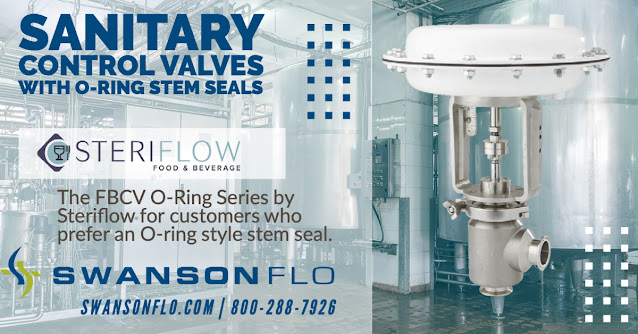Reliable Solutions for Networking and Control System Integration
Meeting increasing demand while maintaining safety is a critical factor in the food and beverage industry. This pressure is driving technologies that help meet regulatory requirements while delivering a competitive edge in efficient and economic performance. Proven technologies and enhanced capabilities are helping overcome new challenges.
Food and beverage companies are facing increasing competition and need increased efficiency, reduced costs, and agility. StoneL is working with many global industry leaders to address these needs and requirements with StoneL valve controllers and monitors. A comprehensive service offering and service network support all StoneL products.
Monitoring Precision
The Axiom and Prism platforms use continuous solid-state sensors that have increased reliability and precise position measurement compared to mechanical or proximity-reed technology. These sensors enable more sophisticated valve diagnostics, leading to reduced life cycle maintenance costs.
Compact Size
The Axiom, Prism, and Eclipse products are all rich with features designed to meet the industry’s increasing need for smaller, lighter, and more durable products to conform to modular process skids and flexible manufacturing requirements. For example, the integral solenoid of the Axiom allows for a smaller overall envelope size on the skid, thanks to less connected tubing and cabling needed to complete the valve assembly.
Predictive Maintenance
You can avoid downtime due to valve failure by having easy access to information about critical parameters. Using WirelessLink, you can remotely monitor valve function, including travel position, time to open/close, and cycle count of your valve. This data can help maintenance quickly identify and address a problem before it causes danger or downtime, at the same time allowing you to extend the life of critical valves.
Improving Safety with Wireless Link
The Wireless Link can help you access difficult-to-reach communication and control modules safely and conveniently. Using StoneL secure app on your iOS mobile device may help you achieve further cost savings while keeping you at a safe distance, up to 50 meters away. With access to cycle count data, you can perform valve maintenance when needed and replace parts before wearing out. You can finally forget scheduling maintenance based on calendar days instead of service needs.
Valve automation and networked valve control devices improve the quality and availability of diagnostics data. At the same time, they help reduce maintenance costs and safety risks at your plant.
StoneL FieldLink products and services enable automated valves and instruments to interconnect with your plant’s control system using standardized, proven, field-based communication protocols.
StoneL offers a full array of components to cost-effectively and reliably complete the valve communication network. That includes power supplies, control system interfacing gateways/masters, robust protected drop connector systems, and connectivity accessories.
DOWNLOAD THE STONEL FOOD AND BEVERAGE BROCHURE HERE
Swanson Flo
https://swansonflo.com
800-288-7926






